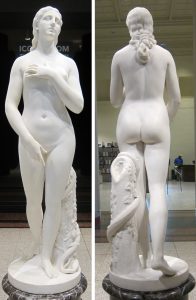Hiram Powers (July 29, 1805 – June 27, 1873) gained International recognition due to his remarkable marble works in Neo-classical style.
Table of Contents
Hiram Powers Biography
He is among the most influential and best-known American sculptors of the nineteenth century. He used his fame positively and made efforts to elevate the role of sculpture in nineteenth-century America.
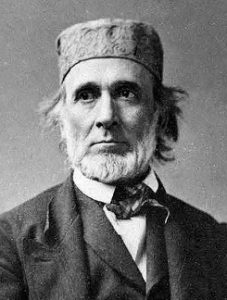
Hiram Powers was born at Woodstock, Vermont, on 29 June 1805. His father was a farmer. in 1818 he moved with his family to Cincinnati but soon his father died and he decided to support his family by taking on various jobs.
Hiram Powers’s Early Life
He worked as a clock worker at Luman Watson’s clock and organ factory and at the Western Museum, where he later mechanically animated wax figures for a tableau of Dante’s Inferno.
This was a beginning of artist life for Powers as by 1826, Powers began assisting Prussian émigré sculptor Frederick Eckstein, under his guidance he learned the rudiments of the sculptural process, which not only included modeling in clay but also producing plaster casts.
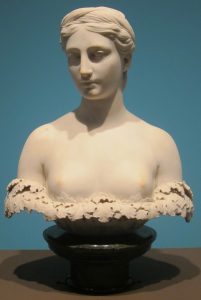
Powers had no formal training, he had just enrolled at drawing classes at Eckstein’s Academy of Fine Arts in 1828. But with his passion, keen interest, and observant skills, Powers completed portraits that revealed an innate artistic talent.
Hiram Powers Beginning Of Career
At the end of 1834 Powers went to Washington, D.C., where he grabbed the attention of the wealthy class and other artists when he modeled a portrait of Andrew Jackson (1835).
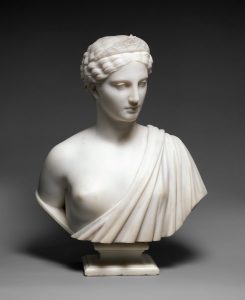
This acted as a catalyst for his career as he soon started receiving other portrait commissions from local residents, which brought financial security and fame. Between the years of 1835-1837, He traveled to many places like Italy and Paris and later settled permanently in Florence.
Hiram Powers America
Although Powers never intended to stay in Florence forever he never returned to the United States. His presence in Italy proved advantageous for a generation of American neoclassical sculptors as it acted as a training ground as well.
The cities of Florence and Rome—had cultural and economic resources favorable to artists which also gathered American and European clients to Powers’ studio, providing a steady stream of commissions for his portraits and ideal subjects.
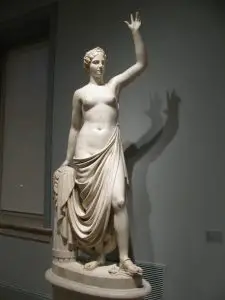
Though Powers developed a good business through his portraits and parlor busts, he also devoted his time to creating life-size, full-figure ideal subjects.
Hiram Powers Works As a Sculptor
In 1843 Powers became an International Sensation and shot to super fame when he created the Greek Slave, which he exhibited at the Crystal Palace (for the Great Exhibition of 1851) in London and later at the New York Crystal Palace in 1853.
This statue gained so much popularity that six replicas were made which accelerated his reputation as one of the most popular sculptors of that time.
The Last of the Tribes Hiram Powers
The Last of the Tribes (1867–72) was his last major work. Powers described this as an American Indian female “fleeing before civilization,”
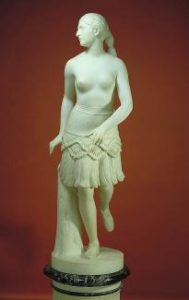
which was an allusion to Euro-American settlement and the forced relocation of Native peoples to government-established reservations.
Some of Hiram Powers’s works include:
Model of the Greek Slave,1843
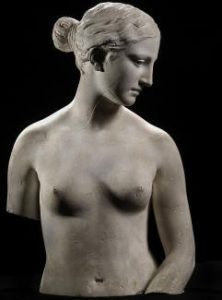
The Greek Slave, 1845
The last of the tribes, 1867
President Andrew Jackson, 1835
Child’s hands, 1851
Ginerva, 1838
Clytie, 1867
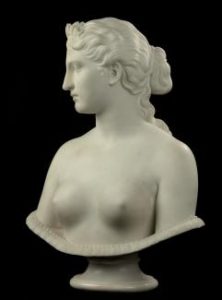
Faith,1867
Fisher Boy, 1844
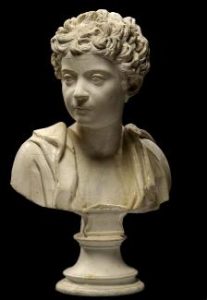
The infant Nero, 1843
More Info On- Antoine Louis Barye, Aubrey Beardsley, James Stark, Pierre Auguste Renoir, Empress Frederick, Thomas Ball
